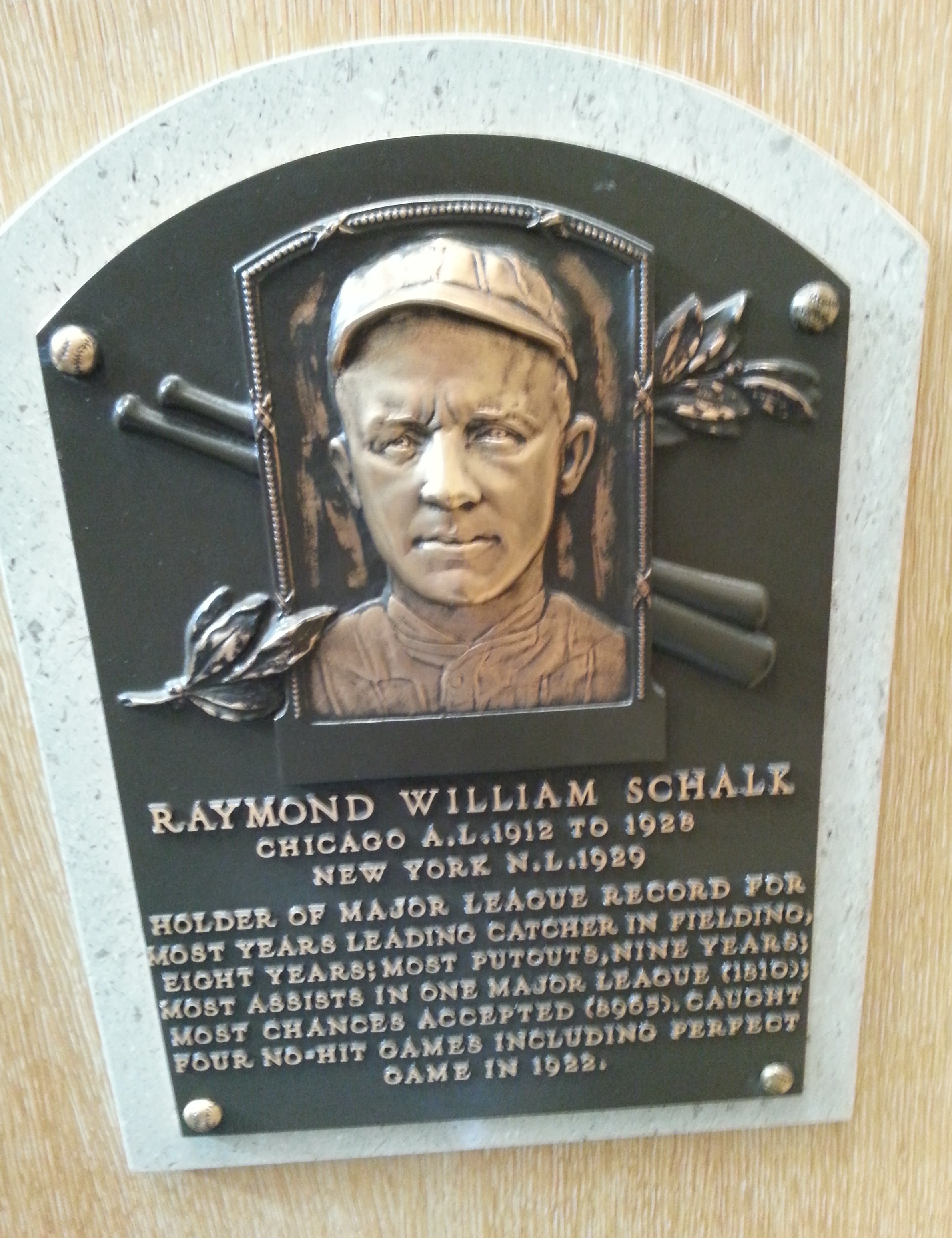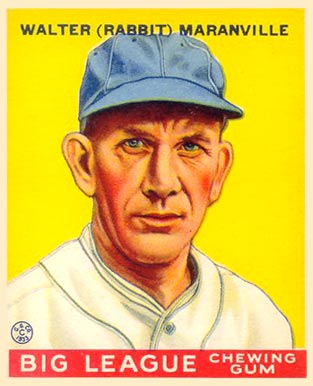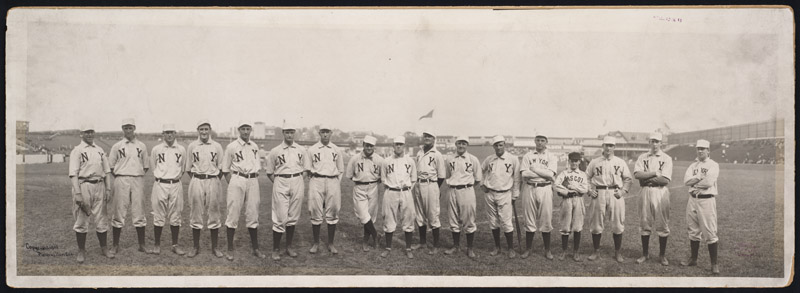|
1937 Baseball Hall Of Fame Balloting
The 1937 process of selecting inductees to the Baseball Hall of Fame was markedly different from the initial elections the previous year. As only half of the initial goal of 10 inductees had been selected in 1936, members of the Baseball Writers' Association of America (BBWAA) were once again given authority to select any players active in the 20th century; but the unsuccessful 1936 Veterans Committee election for 19th-century players led to a smaller Centennial Commission choosing a handful of inductees whose contributions were largely as non-players. In the BBWAA election, voters were again instructed to cast votes for 10 candidates, but were now discouraged from casting votes for active players, although some player-managers whose playing days were largely over, such as Rogers Hornsby, received votes. Any candidate receiving votes on at least 75% of the ballots would be honored with induction to the Hall upon its opening in the sport's supposed centennial year of 1939. Again, ... [...More Info...] [...Related Items...] OR: [Wikipedia] [Google] [Baidu] |
Nap Lajoie
Napoléon "Nap" Lajoie (; September 5, 1874 – February 7, 1959), also known as Larry Lajoie and nicknamed "The Frenchman", was an American professional baseball second baseman and player-manager. He played in Major League Baseball (MLB) for the Philadelphia Phillies, Philadelphia Athletics (twice), and Cleveland Naps between 1896 and 1916. He managed the Naps from 1905 through 1909. Lajoie was signed to the National League's (NL) Phillies in 1896. By the beginning of the 20th century, however, the upstart American League (AL) was looking to rival the supremacy of the NL and in 1901, Lajoie and dozens of former National League players joined the American League. National League clubs contested the legality of contracts signed by players who jumped to the other league, but eventually Lajoie was allowed to play for Connie Mack's Athletics. During the season, Lajoie set the all-time American League single-season mark for the highest batting average (.426). One year later, Lajoie w ... [...More Info...] [...Related Items...] OR: [Wikipedia] [Google] [Baidu] |
Willie Keeler
William Henry Keeler (March 3, 1872 – January 1, 1923), nicknamed "Wee Willie" because of his small stature, was an American right fielder in Major League Baseball who played from 1892 to 1910, primarily for the Baltimore Orioles and Brooklyn Superbas in the National League, and the New York Highlanders in the American League. Keeler, one of the best hitters of his time, was elected to the National Baseball Hall of Fame in 1939. One of the greatest contact hitters of all time and notoriously hard to strike out, Keeler has the highest career at bats-per-strikeout ratio in MLB history: throughout his career, on average he went more than 60 at bats between individual strikeouts. Early life William Henry O'Kelleher Jr. (he later Americanized the name to Keeler) was born in Brooklyn, New York, on March 3, 1872, the son of William O'Kelleher Sr., a trolley switch man. He played baseball from an early age, and as a freshman served as captain of his high school team. He quit school t ... [...More Info...] [...Related Items...] OR: [Wikipedia] [Google] [Baidu] |
Eddie Plank
Edward Stewart Plank (August 31, 1875 – February 24, 1926), nicknamed "Gettysburg Eddie", was an American professional baseball player. A pitcher, Plank played in Major League Baseball for the Philadelphia Athletics from 1901 through 1914, the St. Louis Terriers in 1915, and the St. Louis Browns in 1916 and 1917. Plank was the first left-handed pitcher to win 200 games and then 300 games, and now ranks third in all-time wins among left-handers with 326 career victories ( 13th all time) and first all-time in career shutouts by a left-handed pitcher with 66. Philadelphia went to the World Series five times while Plank played there, but he sat out the 1910 World Series due to an injury. Plank had only a 1.32 earned run average (ERA) in his World Series career, but he was unlucky, with a 2–5 win–loss record in those games. Plank died of a stroke in 1926. He was posthumously elected to the Baseball Hall of Fame in 1946 by the Veterans Committee. Early life Plank grew up on a ... [...More Info...] [...Related Items...] OR: [Wikipedia] [Google] [Baidu] |
Ray Schalk
Raymond William Schalk (August 12, 1892 – May 19, 1970) was an American professional baseball player, coach, manager and scout. He played as a catcher in Major League Baseball for the Chicago White Sox for the majority of his career. Known for his fine handling of pitchers and outstanding defensive ability, Schalk was considered the greatest defensive catcher of his era. He revolutionized the way the catching position was played by using his speed and agility to expand the previously accepted defensive capabilities for his position. Schalk was elected to the Baseball Hall of Fame in 1955. Early life Born in Harvel, Illinois to German immigrant parents, Schalk grew up in Litchfield, Illinois.Nokomis' baseball ties on display at museum '' |
Rabbit Maranville
Walter James Vincent "Rabbit" Maranville (November 11, 1891 – January 6, 1954) was an American professional baseball shortstop, second baseman and manager. He played in Major League Baseball (MLB) for the Boston Braves, Pittsburgh Pirates, Chicago Cubs, Brooklyn Robins, and St. Louis Cardinals between 1912 and 1934. At the time of his retirement in 1935, he had played in a record 23 seasons in the National League, a mark which was not broken until 1986 by Pete Rose."Rabbit Maranville Statistics and History" baseball-reference.com. Retrieved on May 14, 2017. Maranville was inducted into the |
Mordecai Brown
Mordecai Peter Centennial Brown (October 19, 1876 – February 14, 1948), nicknamed Three Finger Brown or Miner, was an American Major League Baseball pitcher and manager during the first two decades of the 20th century (known as the "dead-ball era"). Due to a farm-machinery accident in his youth (April 17, 1888), Brown lost parts of two fingers on his right hand, and in the process gained a colorful nickname. He turned this handicap into an advantage by learning how to grip a baseball in a way that resulted in an exceptional curveball (or knuckle curve), which broke radically before reaching the plate. With this technique he became one of the elite pitchers of his era. Brown was elected to the Baseball Hall of Fame in 1949. Early life Brown was born in Nyesville, Indiana. He was also known as "Miner", having worked in western Indiana coal mines for a while before beginning his professional baseball career. Nicknames like "Miner" (or misspelled as "Minor") and "Three Finger" (or s ... [...More Info...] [...Related Items...] OR: [Wikipedia] [Google] [Baidu] |
John McGraw
John Joseph McGraw (April 7, 1873 – February 25, 1934) was an American Major League Baseball (MLB) player and manager who was for almost thirty years manager of the New York Giants. He was also the third baseman of the pennant-winning 1890s Baltimore Orioles teams, noted for their innovative, aggressive play. McGraw was born into poverty in Truxton, New York. He found an escape from his hometown and a bad family situation through baseball, beginning a quick rise through the minor leagues that led him to the Orioles at the age of 18. Under the tutelage of manager Ned Hanlon, the Orioles of the 1890s won three National League (NL) pennants; McGraw was one of the stalwarts of the team alongside Wee Willie Keeler, Hughie Jennings, and Wilbert Robinson. The Orioles perfected the hit and run play and popularized the Baltimore chop; they also sought to win by intimidating the opposing team and the umpire. The instability in MLB at the turn of the 20th century led to McGraw bec ... [...More Info...] [...Related Items...] OR: [Wikipedia] [Google] [Baidu] |
Roger Bresnahan
Roger Philip Bresnahan (June 11, 1879 – December 4, 1944), nicknamed "The Duke of Tralee", was an American player and manager in Major League Baseball (MLB). As a player, Bresnahan competed in MLB for the Washington Senators (1897), Chicago Orphans (1900), Baltimore Orioles (1901–02), New York Giants (1902–1908), St. Louis Cardinals (1909–1912) and Chicago Cubs (1913–1915). Bresnahan also managed the Cardinals (1909–1912) and Cubs (1915). He was a member of the 1905 World Series champions. Bresnahan began his MLB career as a pitcher. He also served as an outfielder, before becoming a regular catcher. For his MLB career, Bresnahan had a .279 batting average in 4,480 at bats and a 328–432 managerial win–loss record. Bresnahan popularized the use of protective equipment in baseball by introducing shin guards, to be worn by catchers, in 1907. He also developed the first batting helmet. After retiring as a player, Bresnahan remained active in professional base ... [...More Info...] [...Related Items...] OR: [Wikipedia] [Google] [Baidu] |
Johnny Evers
John Joseph Evers (July 21, 1881 – March 28, 1947) was an American professional baseball second baseman and manager. He played in Major League Baseball (MLB) from 1902 through 1917 for the Chicago Cubs, Boston Braves, and Philadelphia Phillies. He also appeared in one game apiece for the Chicago White Sox and Braves while coaching them in 1922 and 1929, respectively. Evers was born in Troy, New York. After playing for the local minor league baseball team for one season, Frank Selee, manager of the Cubs, purchased Evers's contract and soon made him his starting second baseman. Evers helped lead the Cubs to four National League pennants, including two World Series championships. The Cubs traded Evers to the Braves in 1914; that season, Evers led the Braves to victory in the World Series, and was named the league's Most Valuable Player. Evers continued to play for the Braves and Phillies through 1917. He then became a coach, scout, manager, and general manager in his later c ... [...More Info...] [...Related Items...] OR: [Wikipedia] [Google] [Baidu] |
Frank Chance
Frank Leroy Chance (September 9, 1877 – September 15, 1924) was an American professional baseball player. A first baseman, Chance played in Major League Baseball for the Chicago Cubs (initially named the "Orphans") and New York Yankees from 1898 through 1914. He also served as manager (baseball), manager of the Cubs, Yankees, and Boston Red Sox. Discovered by the Cubs as he played semi-professional baseball while attending college, Chance debuted with the Cubs in 1898, serving as a part-time player. In 1903, Chance became the Cubs' regular first baseman, and in 1905, he succeeded Frank Selee as the team's manager. Chance led the Cubs to 100 wins in 1906, 1907, 1909, and 1910, becoming the first manager to compile List of Major League Baseball 100 win seasons, four 100-win seasons (only eight other managers have accomplished the feat in MLB history), with no other manager other than Chance leading a team to 100 wins four times in five seasons. They would win four National League ... [...More Info...] [...Related Items...] OR: [Wikipedia] [Google] [Baidu] |
Ed Walsh
Edward Augustine "Big Ed" Walsh (May 14, 1881 – May 26, 1959) was an American pitcher and manager in Major League Baseball. From 1906 to 1912, he had several seasons where he was one of the best pitchers in baseball. Injuries shortened his career. Walsh holds the record for lowest career earned run average, 1.82.Coffey (2004), pp. 26–33. He is one of two modern (post-1901) pitchers to win 40 or more games in a single season, and the last pitcher to do so. He is the last pitcher from any team to throw more than 400 innings in a single season, a feat that he most recently accomplished in 1908. He was inducted into the Baseball Hall of Fame in 1946. Early life Walsh was born in Plains Township, Pennsylvania, to Michael and Jane Walsh. He worked in the Luzerne County coal mines when he was young. Walsh started his professional baseball career with the 1902 Meriden Silverites of the Connecticut State League. After playing the 1903 season with the Meriden Silverites and Newark S ... [...More Info...] [...Related Items...] OR: [Wikipedia] [Google] [Baidu] |
Jimmy Collins
James Joseph Collins (January 16, 1870 – March 6, 1943) was an American professional baseball player. He played 14 seasons in Major League Baseball. Collins was elected to the Baseball Hall of Fame in 1945. Collins was especially regarded for his defense. He was best known for his ability to field a bunt—prior to his debut, it was the shortstop who fielded bunts down the third base line—and is regarded as a pioneer of the modern defensive play of a third baseman. As of 2012, he is second all-time in putouts by a third baseman behind Brooks Robinson. At the plate, Collins finished his career with 65 home runs, 1055 runs scored, 983 RBI and a .294 batting average. Collins was also the first manager of the Boston Red Sox franchise, then known as the Boston Americans. He was the winning manager in the first-ever World Series, as Boston defeated the Pittsburgh Pirates in the 1903 World Series, five games to three. Early life Jimmy Collins was born in Niagara Falls, ... [...More Info...] [...Related Items...] OR: [Wikipedia] [Google] [Baidu] |











